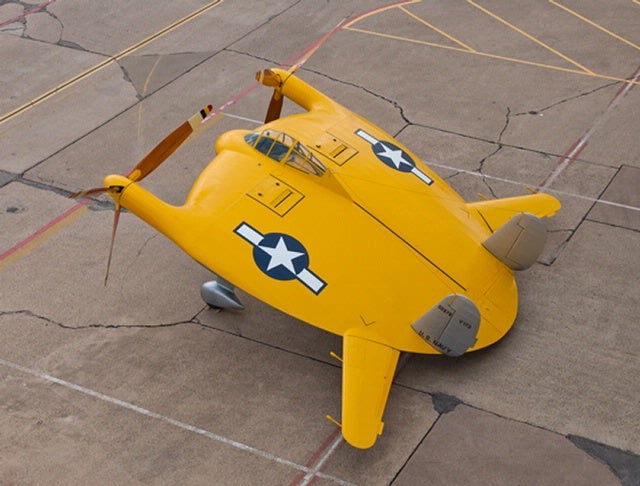rcspaceflight
creator of virtual planes
I'm building my first twin engine plane this week and I have a question. Does it matter which engine spins counter clockwise and which spins clockwise?
I know for a fact that the flying pancake, pictured below, has the propellers spin so the air is being pushed down and under the wing. This is a key feature of the flying pancake because it allows for minimal air spillage over the wing tips which increases lift and efficiency which is why it can fly so great with such stubby wings.

But I'm not mounting the motors close enough to the wing tips to gain that advantage. So I'm guessing it doesn't matter at all which motor spins in which direction. Or does it?
Along the same question, I also want to ask about a plane with 4 engines. Would the two engines on each wing spin in the same direction? Or would the two engines near the fuselage spin in one direction and the two outside engines spin in the other? Or does it not matter, at all?
I'd probably be best off just copying what real aircraft do and this video shows that it's the same rotation set up as the flying pancake.
But I'd still like to know if it even matters. If anyone knows that is.
I know for a fact that the flying pancake, pictured below, has the propellers spin so the air is being pushed down and under the wing. This is a key feature of the flying pancake because it allows for minimal air spillage over the wing tips which increases lift and efficiency which is why it can fly so great with such stubby wings.

But I'm not mounting the motors close enough to the wing tips to gain that advantage. So I'm guessing it doesn't matter at all which motor spins in which direction. Or does it?
Along the same question, I also want to ask about a plane with 4 engines. Would the two engines on each wing spin in the same direction? Or would the two engines near the fuselage spin in one direction and the two outside engines spin in the other? Or does it not matter, at all?
I'd probably be best off just copying what real aircraft do and this video shows that it's the same rotation set up as the flying pancake.
But I'd still like to know if it even matters. If anyone knows that is.
